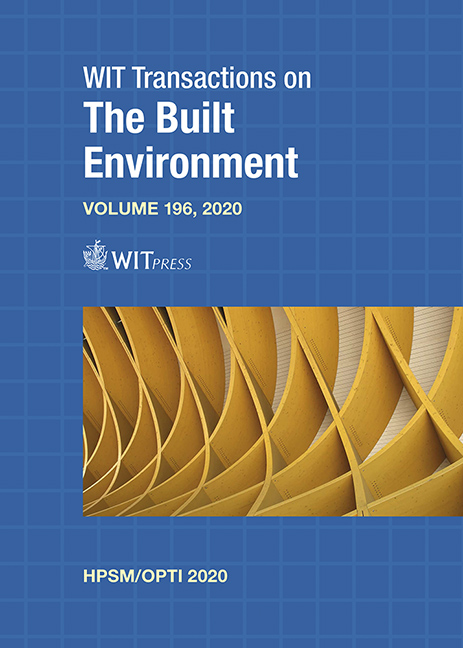ROLE OF THE SOCIAL DIMENSION IN THE SUSTAINABILITY-ORIENTED MAINTENANCE OPTIMIZATION OF BRIDGES IN COASTAL ENVIRONMENTS
Price
Free (open access)
Transaction
Volume
196
Pages
11
Page Range
205 - 215
Published
2020
Paper DOI
10.2495/HPSM200211
Copyright
WIT Press
Author(s)
IGNACIO J. NAVARRO, VÍCTOR YEPES, JOSÉ V. MARTÍ
Abstract
The recently established Sustainable Development Goals recognize the importance of infrastructures for achieving a sustainable future. Along their long-lasting life cycle, infrastructures generate a series of impacts, the reduction of which has been one of the main focus of researchers’ attention in past years. The optimization of maintenance intervals of structures, such as bridges, has aroused the attention of the civil engineering sector, since most of the impacts of infrastructures occur during the operational phase. Thus, bridges are currently designed to attend the economic and environmental impacts derived from maintenance activities. However, the social pillar of sustainability is usually neglected in those analyses. Since no universally accepted methodology does yet exist for its consistent evaluation, the social dimension is not effectively included in the life cycle assessments of infrastructures. This communication evaluates the life cycle impacts of alternative concrete bridge deck designs in a maintenance-demanding environment near shore. Reliability-derived maintenance intervals are first optimized by minimizing the economic and environmental impacts. In a second stage of the analysis, the social dimension is included in the optimization process and results are compared. Optimization results from these combined assessments are obtained applying the multi-criteria decision-making technique AHP-TOPSIS. The present paper demonstrates how the inclusion of the social dimension may lead to different, more sustainably-oriented optimal maintenance strategies. The three-dimensional approach applied here has resulted in other alternatives being preferred to those derived from the conventional assessment that considers the economic and environmental perspectives. Such findings support the idea that holistic life cycle assessments are required for sustainable designs of infrastructures and that more efforts are urgently needed to integrate the social dimension in sustainability assessments of structures.
Keywords
life cycle assessment, bridges, maintenance, reliability, social impacts, sustainable design, sustainability, corrosion, multi-criteria decision making, AHP





